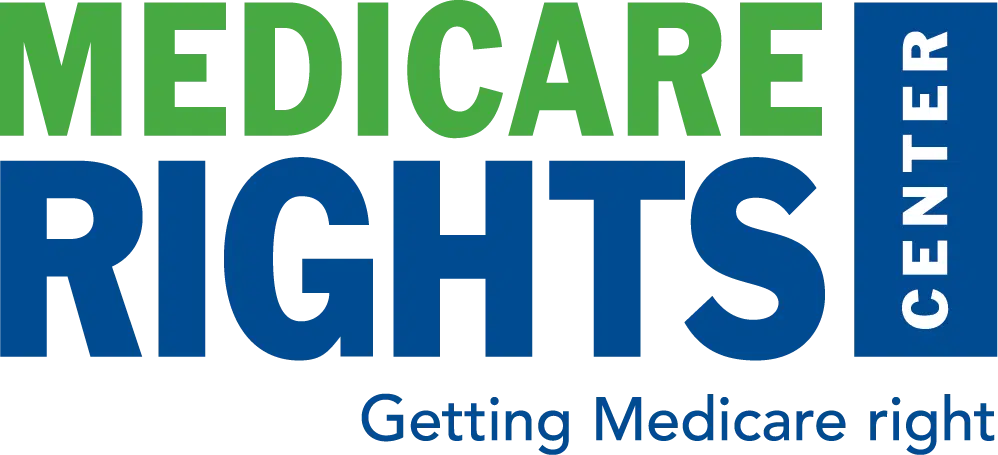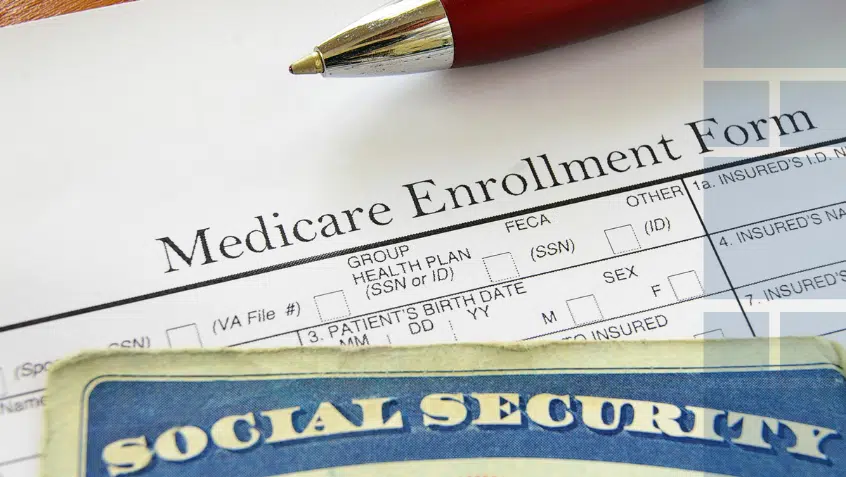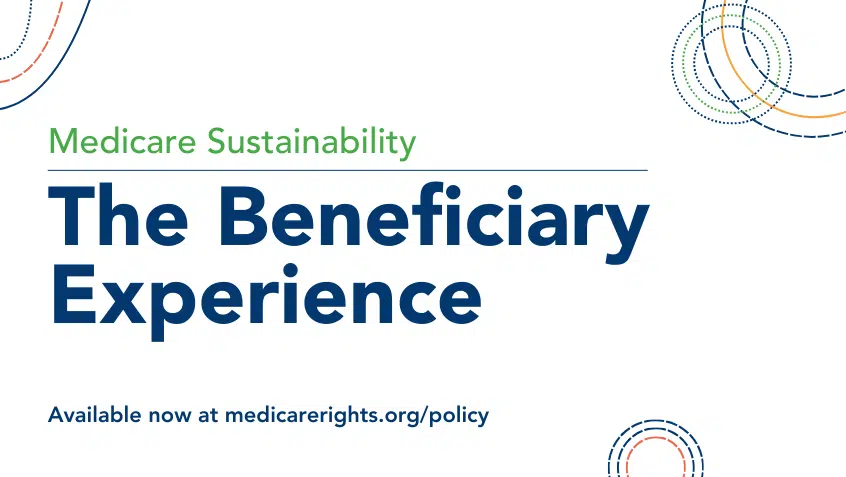Join Us Live for a Discussion on Medicare, Democracy, and the Future of Health Care
Honoring America’s Family Caregivers, the Unseen Workforce Behind Our Health System

The end of the year is in sight, and the holiday season is in full swing. For many, now is the time for family vacations or reunions and taking a break from everyday work and routine. But for the 63 million Americans whose everyday work and routine is their family, this month carries an extra meaning. November is National Family Caregivers Month, an observance dedicated to honoring and advocating for the people who dedicate their time to caring for family members with a disability or complex medical condition.
One in four American adults were family caregivers in 2025. The majority provide care for older adults, many of them a parent or spouse of the caregiver. They assist with many activities of daily living, routine tasks like bathing, dressing, and feeding oneself, that help the care recipient maintain their health and personal independence.
One in four American adults were family caregivers in 2025.
In addition to these responsibilities, nearly all caregivers also assist with instrumental activities of daily living—tasks like financial management, housekeeping, and transportation—which help the care recipient remain a part of their community and live independently. They are also essential advocates in the care coordination of their family member, ensuring they are getting adequate care and assisting them with medical decisions and appointments.
Caregiving Often Is Invisible and Unpaid Labor
The labor of caregivers is often unseen and unpaid. They are the “linchpin in the health care of older adults,” according to a team of public health researchers at the Johns Hopkins Bloomberg School, accompanying care recipients to their appointments and managing their medications and treatment plans around the clock. But their labor is seldom proportionately recognized or supported by the health care system, whether by engagement from medical providers who direct their family members’ care or through financial compensation.
Most caregivers are not paid for their labor: A 2021 AARP study valued the unpaid contributions of family caregivers at $600 million annually. Since the number of family caregivers is now over 150% of the number in this study, the value is likely much higher today.
The labor of caregivers is seldom proportionately recognized or supported by the health care system.
Across the 32 states that reported data in AARP’s Caregiving in the U.S. 2025: Caring Across States report, the portion of family caregivers who were paid was under 25% in nearly every state, with some states reporting numbers as low as 10%. Those who are paid mostly receive compensation through state-level Medicaid waiver self-directed programs, a system that has wide variations in eligibility and budgets across states and one that is made precarious by HR 1’s cuts to Medicaid.
Though the labor of caregiving is tantamount to a full-time job, most caregivers must hold additional jobs as they are often not paid for their caregiving work; nearly one in four caregivers provide 40+ hours of care a week. Unsurprisingly, caregivers report lower levels of health and less time to rest, with a significant number across states reporting consistently low levels of mental and physical health.
The “Sandwich” Generation of Caregivers
With an average age of 51 and a majority being women, many family caregivers in the U.S. are part of the “sandwich generation,” caring both for older adults of their parents’ generation and raising children. This accounts for nearly one in three caregivers, a generation pulled in both directions and stretched thin.
This generational responsibility also can restructure a family in significant and emotionally involving ways. Caregivers have to navigate shifting family roles as an older adult becomes a care recipient, and in the families of the 4 million children who act as supporting caregivers, the primary caregiver and parent often takes on an additional educational role.
Medicare Policy Changes to Help Caregivers
The responsibility of caring for a family member, especially for a parent or older relative from whom one has received care and guidance, is both weighty and beautiful for many. Over half of family caregivers in the U.S. say they get a sense of meaning or purpose from their role as a caregiver, and many report that the experience helps them learn new skills and strengthen relationships with others. Better policies around caregiving and long-term supports and services (LTSS) can preserve the positive aspects of caregiving while mitigating its challenges and stressors.
Better policies around caregiving and LTSS can preserve the positive aspects of caregiving while mitigating its challenges and stressors.
At Medicare Rights, we believe that health care policy reform is essential to better support family caregivers and to strengthen the infrastructure of long-term care that many Medicare recipients rely on.
Especially in the face of cuts to Medicaid funding to states, which currently provides most of the avenues by which family caregivers receive pay, expanding Medicare coverage of LTSS can lessen economic stress on caregivers. Making LTSS a standard benefit in Medicare and eliminating technical requirements that disqualify beneficiaries from home health care coverage will also strengthen Medicare coverage for care recipients and remove undue stress due to coverage denials and difficult bureaucracy.
Family caregivers are care professionals.
Family caregivers are care professionals, and they deserve access to information and professional training that matches the intensity and responsibility of their jobs. In AARP’s 2025 survey, caregivers in most states emphasized that they needed better information, especially about managing physical and emotional stress and ensuring safety at home. Training that covers the many aspects of the caregiving job and takes into consideration the diverse and growing population of caregivers is a necessary and urgent part of health care reform.
Join us in celebrating family caregivers and recognizing their labor and dedication in providing care and strengthening communities.
Read the AARP report, Caregiving in U.S. 2025: Caring Across States.
Show Comments
We welcome thoughtful, respectful discussion on our website. To maintain a safe and constructive environment, comments that include profanity or violent, threatening language will be hidden. We may ban commentors who repeatedly cross these guidelines.
Help Us Protect & Strengthen Medicare
Donate today and make a lasting impact
More than 67 million people rely on Medicare—but many still face barriers to the care they need. With your support, we provide free, unbiased help to people navigating Medicare and work across the country with federal and state advocates to protect Medicare’s future and address the needs of those it serves.
The Latest
Most Read
Add Medicare to Your Inbox
Sign up to receive Medicare news, policy developments, and other useful updates from the Medicare Rights.
View this profile on InstagramMedicare Rights Center (@medicarerights) • Instagram photos and videos










One Comment on “Honoring America’s Family Caregivers, the Unseen Workforce Behind Our Health System”
Crystal Blair Goble
November 29, 2025 at 2:51 pmFull time caregiver for Mom who is nursing home level of care. Stroke left her paralyzed and unable to care for herself. We live off her social security check. I can’t leave her alone to work. Paying someone would defeat the purpose. She makes 30$ a month to much for Medicaid, and well in NC without Medicaid there is no help. I’ve found that most agencies send you around in circles to apply for programs that help as if I have extra time to do that. If she “pays” me out of her check so that I’m contributing to my social security we owe taxes for her being an employer as well as I for self employed if we do as contracted labor. I’ve also seen a push to use the nursing homes which we’re horrible in our experience. It’s like the government will help if you stick your loved one in a facility but not if you try to take care of them at home. We don’t have enough to make it on paper. Only by the grace of God have we survived this for two years now. The home health agencies that were covered under her Medicare never sent anyone to help with ADL and souch time was wasted on paperwork at each in home visit so actual therapy was scarce. Mom worked hard her entire life. I feel it is so unfair for both her and I. We would be so much better off to give the 30$ month over the limit back to social security to get Medicaid. Agencies around here won’t even talk to you if you don’t have Medicaid. I’ve looked for loopholes, can’t afford to pay out of pocket for elder atty or Medicaid planner. Aient it a shame you have to hire a professional to figure out what government benefits you are entitled to if you just know how to word it or what papers to have drawn up. We are the poorest of the to rich for medicaid and it sucks really. End rant.